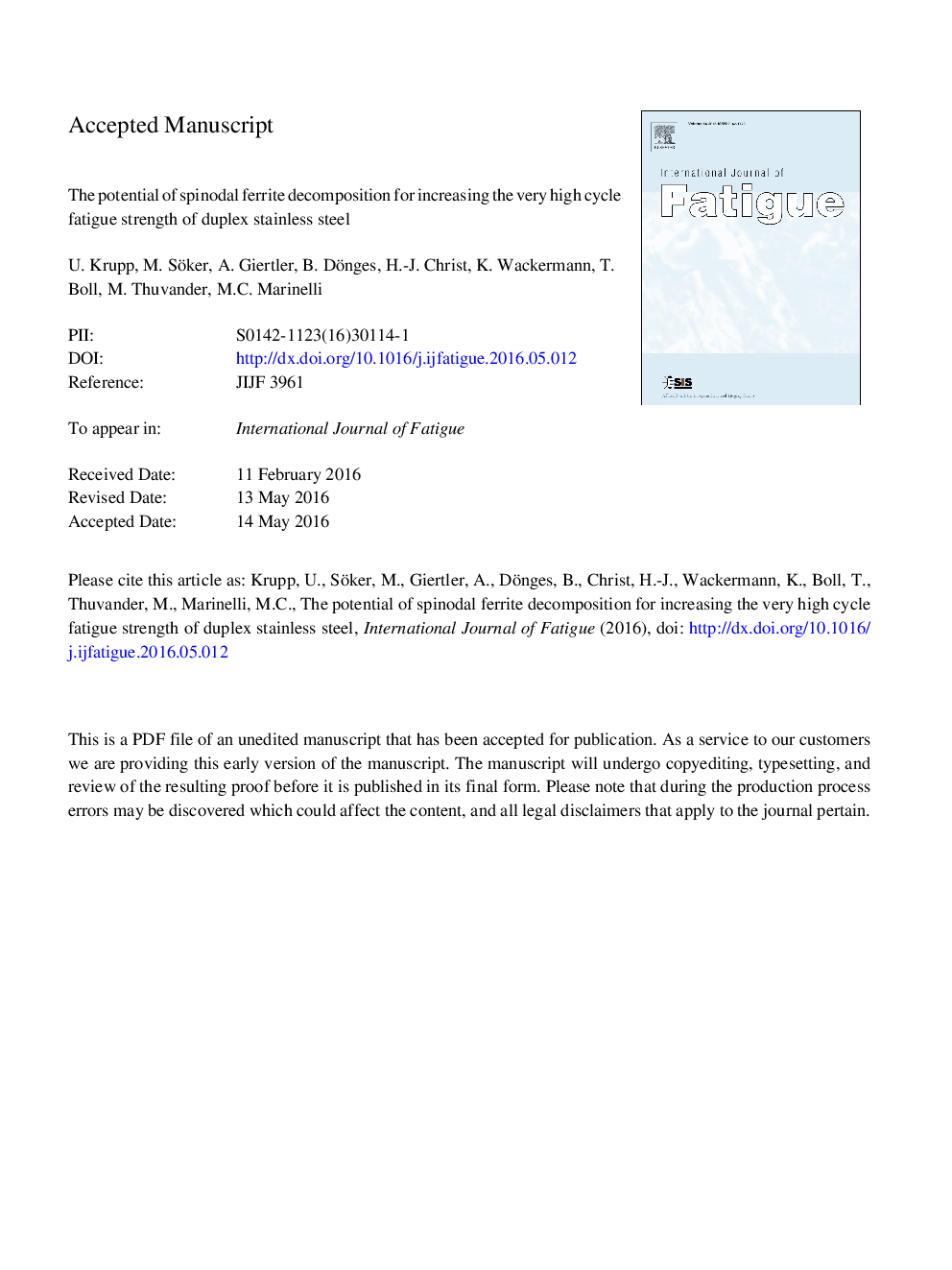| کد مقاله | کد نشریه | سال انتشار | مقاله انگلیسی | نسخه تمام متن |
|---|---|---|---|---|
| 5015310 | 1463733 | 2016 | 26 صفحه PDF | دانلود رایگان |
عنوان انگلیسی مقاله ISI
The potential of spinodal ferrite decomposition for increasing the very high cycle fatigue strength of duplex stainless steel
ترجمه فارسی عنوان
پتانسیل تجزیه فریت اسپینودال برای افزایش مقاومت خستگی چرخه بسیار زیاد فولاد ضد زنگ دوبلکس
دانلود مقاله + سفارش ترجمه
دانلود مقاله ISI انگلیسی
رایگان برای ایرانیان
کلمات کلیدی
فولاد ضد زنگ دوبلکس، تجزیه اسپینودال، خستگی چرخه بسیار زیاد، توموگرافی پروب اتم
موضوعات مرتبط
مهندسی و علوم پایه
سایر رشته های مهندسی
مهندسی مکانیک
چکیده انگلیسی
Duplex stainless steels (DSS) have become candidate materials for structural applications, where conventional austenitic stainless steels fail due to very high cycle fatigue (VHCF) in combination with corrosive attack. It seems that DSS exhibit a fatigue limit, which can be attributed to the two-phase austenitic-ferritic microstructure. Ultrasonic VHCF testing revealed that the phase boundaries are efficient obstacles for the transmission of slip bands and microstructural fatigue cracks up to 109 cycles and even beyond. The barrier strength is determined by the misorientation relationship between neighbouring grains but also by the strength of the individual phases. By thermal treatment at 475 °C, spinodal decomposition of the ferrite phase results in the formation of Cr-rich αⲠprecipitates. While during static loading these precipitates give rise to a loss in ductility (475 °C embrittlement), it was shown that the HCF strength can be increased and that there is also a tendency towards a beneficial effect on the VHCF behaviour. A more detailed analysis of the local plasticity sites by means of atom probe tomography (APT) revealed a dissolution of the αⲠprecipitates within operated slip bands. The dissolution might be an indication for a local softening mechanism that limits the VHCF strengthening effect of spinodal decomposition.
ناشر
Database: Elsevier - ScienceDirect (ساینس دایرکت)
Journal: International Journal of Fatigue - Volume 93, Part 2, December 2016, Pages 363-371
Journal: International Journal of Fatigue - Volume 93, Part 2, December 2016, Pages 363-371
نویسندگان
U. Krupp, M. Söker, A. Giertler, B. Dönges, H.-J. Christ, K. Wackermann, T. Boll, M. Thuvander, M.C. Marinelli,
